Cannabis edibles have exploded in popularity in recent years, due to the powerful, full-body sensation they produce, and the fact that they can be consumed easily and discreetly, without any need to smoke anything. When making your own cannabis edibles at home, having your own infused cannabis oil on hand makes every edible recipe a cinch.
The possibilities with canna oil are endless. It’s easy to prepare, stores well, and has multiple uses from hot sauce and peanut butter to chocolate-covered strawberries and canna-bread. Cannabis-infused oil is also a great oil for topical products like a cannabis salve, or even intimate products like infused sexual lubricant.
Save this recipe to your inbox
Why cook with cannabis?
Cooking with cannabis allows you to combine two of the best things in life, weed and food. Sure, it takes more time and effort than simply packing a bowl or rolling a joint, but it’s also a great way to further your relationship with the plant and broaden the ways you consume it.
Edibles are discreet, and work well for people who can’t smoke or don’t like to smoke to consume and benefit from cannabis. They’re also great if you just want to give your lungs a break.
Why marijuana edibles need a fat
All cannabinoids, including THC and CBD, are lipophilic– the scientific way of saying fat-loving. This means cannabinoids will dissolve and mix well into fats like butter and oil, but not into water. It’s this fat-loving quality of THC that allows its detection on a drug test over 30 days after last toking.
The oil used during the infusion process absorbs the THC and a wealth of other cannabinoids, terpenes and other cannabis compounds, creating an infused fat that can be used later for cooking or making edibles. Infusing cannabis oils is a staple skill of cannabis chefs of all skill levels.
Common mistakes with cannabis infusions
- Don’t forget to decarboxylate. Not only is this step necessary for getting high, it’s also quite easy and cuts down the time you need for infusion.
- Don’t use too much weed. Many people add too much cannabis to their mix and end up making an infusion that is too potent to use liberally. Start small with that first batch, and adjust your cannabis level as needed.
- Don’t use top-shelf cannabis. While preparing edibles, the process can lead to a loss of certain components of the cannabis flower, especially terpenes., Using top shelf herb will still make potent edibles, but you may lose some of the qualities that made the cannabis top shelf in the first place. Using lower quality herb (like small nugs) is a good way to save some money in the process. In fact, you can even make edibles using shake, leaves, or already vaped cannabis.
- Pay attention when you’re infusing. While the recipes are quite simple, it’s easy to forget you have something on the stove, or to leave the temperature too high, and find a batch of burnt oil or worse, a grease fire in the kitchen.
- Clearly label and store your cannabis oil in a dark, dry location out of the reach of kids and pets. While oil may not seem to you like an enticing snack, kids are notorious for eating things they’re not supposed to, and consuming THC is a guaranteed bad time for everyone.
Don’t forget to decarboxylate
You can’t merely dump your weed into a vat of hot oil, stir it a few times and call it a day. The cannabis must first go through decarboxylation for it to have many of its desired effects. Decarboxylation is a chemical reaction that activates compounds in cannabis — most notably, THC — which through decarboxylation transforms from the non-psychotropic THCA to the THC that we all know and love.
While cannabis can be infused in its raw form, the resulting infusion will have reduced psychoactivity as THCA and other cannabinoid acids do not penetrate into the brain, and do not activate CB1 receptors in the same way as THC. Though many cannabis consumers are targeting psychoactive effects, there are folks infusing raw (non-decarboxylated) cannabis into coconut oils for a number of the benefits of cannabinoid acids, like analgesia, anti-nausea, and anti-inflammatory effects. 1
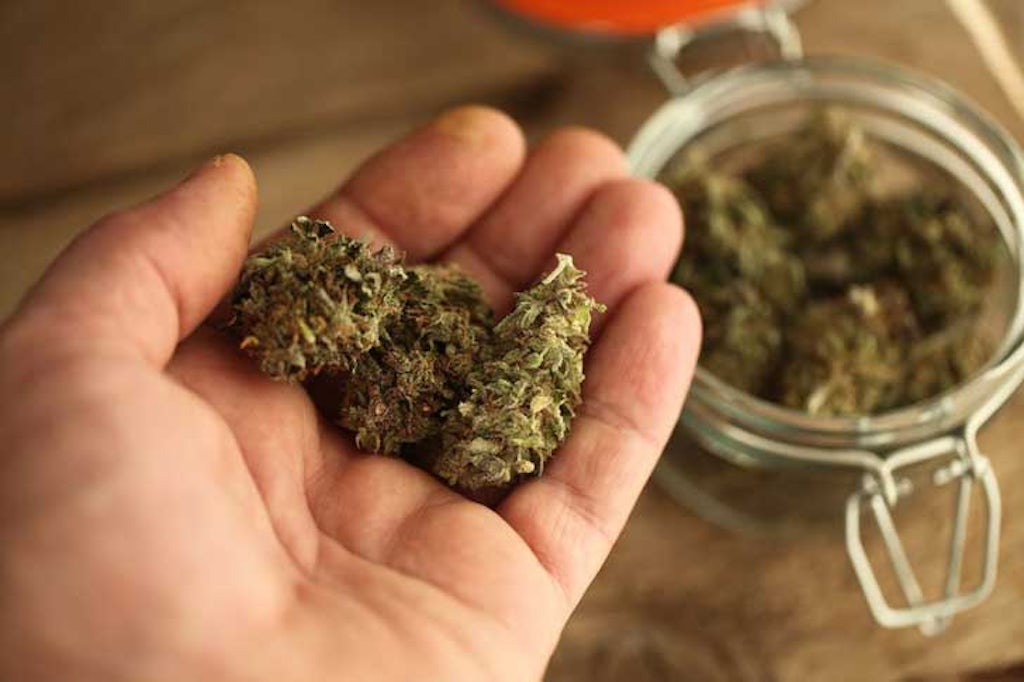
The main way to decarboxylate cannabis is through heat, which occurs instantly when cannabis is smoked. To decarb in the oven, you’ll want to crumble your cannabis and pop it in the oven 220-245°F (105-120°C) for 30-40 minutes. If you want to skip this step, you can invest in a decarb machine that does the work for you.
What’s the best oil to use for cannabis oil?
You can use any oil to make cannabis oil, but the most popular oils are coconut, olive, and MCT oil. Of those choices, coconut oil is perhaps the most versatile.
Infused coconut oil is a great plant-based substitute for butter, providing a very similar mouthfeel, nutritional profile and kitchen utility; this includes turning it into infused canna coconut oil. . While olive oil is best for savory recipes, coconut oil works well in both. Coconut oil is also great for your skin, making it perfect for topicals, too. Many MCT oils (which are commonly used in tinctures) are derived from coconut oil.
Recommended for you
Trusted Mushrooms take the guesswork out of a muscimol trip, so you don’t have to boil or dry anything (or feed it to reindeer.) Just pop a gummy instead!
Order NowRecipe: How to make cannabis oil with coconut oil, olive oil, or MCT oil
First things first, get your ingredients ready.
Ingredients
- 0.24 oz
of ground decarboxylated cannabis
- 1 cup
of olive oil, coconut oil or MCT oil
-
Double-boiler, saucepan, or crockpot
- 7 grams
of ground decarboxylated cannabis
- 250 mL
of olive oil, coconut oil or MCT oil
-
Double-boiler, saucepan, or crockpot
There are three main methods of infusing oil or fat with cannabis: saucepan, double boiler, or slow cooker.
Method
The saucepan method may be the most straightforward, but it’s also most prone to burning. Saucepan cannabis infusion is as simple as heating the oil and the decarboxylated cannabis in a saucepan at around 130-150°F (55-65°C) for about 1-3 hours. This is a temperature much lower than typical cooking. If you’re using a saucepan, make sure to stir frequently and keep at a low heat, so as to avoid scorching.
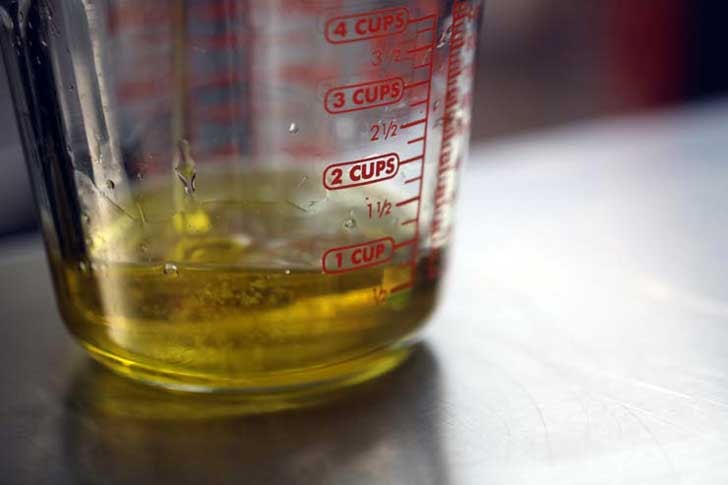
If using a double boiler, put water in the bottom pan and then add the oil to the top section, stir in the decarbed cannabis and heat on low — with the water in the bottom simmering gently — for about 1-3 hours.
In a slow cooker, combine the cannabis and oil and cook at the same low temperature for around 1-3 hours.
It is possible to infuse cannabis into oil without decarboxylation at first, but it will take much longer, possibly several hours.
Note: Whatever your method, when you’re done cooking the oil and cannabis together, let it cool and then strain the oil to remove the cannabis, and bottle it, label the bottle and store in a cool dark place.
How much cannabis should I use for cannabis oil?
The amount of cannabis you should use for your oil depends on a number of factors including your tolerance and the potency of the cannabis used (if you know). It’s hard to gauge the potency of homemade edibles; even with a calculator, your estimate is going to be off by some, if not a lot.
Dosing your edibles
Dosing correctly is important. With smoking, the effects hit you nearly instantly so it’s easy to tell if you’re consuming too much. Thanks to the delayed onset of edibles, it’s much easier to go overboard. It can be hard to properly measure homemade edibles if using homemade infusions, so always follow this golden rule – start low and go slow.
Dosing is more precise when purchasing finished products such as isolates and distillates in legal markets. Potency is typically clearly labeled and you know it’s passed through regulatory compliance. This is very different from infusing your own cannabis oils at home. The true concentration of homemade oils can be estimated, but there are many factors that are difficult to account for. The concentration of the oil could only accurately be determined with a laboratory test.
Infusion Calculator
You can use flower or any cannabis concentrate, as long as you know the THC/CBD content.
How strong is your cannabis?
Edibles can also hit harder than smoking. This is because in your gut, THC is converted into 11-hydroxy-THC, a compound up to twice as strong as THC. Remember: you can always eat more, but you can’t eat less.

- If you’re using ½ ounce (14 grams) of cannabis that is 14% THC using the above recipe, each teaspoon of oil (5mL) will contain roughly 40mg of THC.
- If you’re using ¼ ounce (7 grams) of cannabis that is 14% THC using the above recipe, each teaspoon of oil (5mL) will contain roughly 20mg of THC.
Sources
- Anderson LL, Low IK, Banister SD, McGregor IS, Arnold JC. Pharmacokinetics of Phytocannabinoid Acids and Anticonvulsant Effect of Cannabidiolic Acid in a Mouse Model of Dravet Syndrome. J Nat Prod. 2019;82(11):3047-3055. doi:10.1021/acs.jnatprod.9b00600
Sign up for bi-weekly updates, packed full of cannabis education, recipes, and tips. Your inbox will love it.

 Shop
Shop Support
Support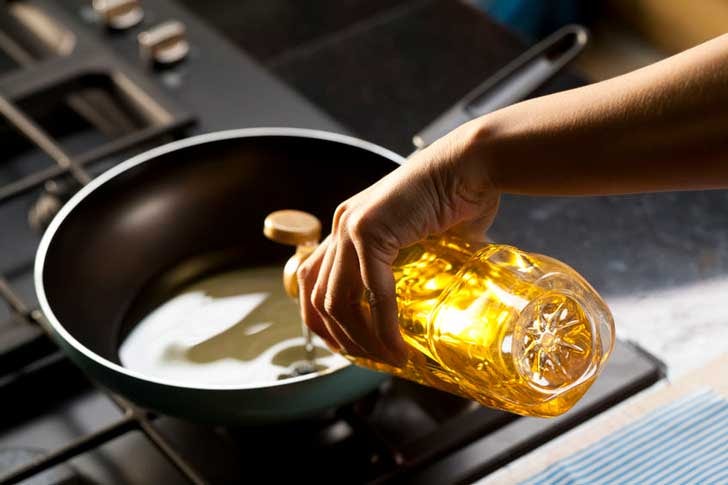


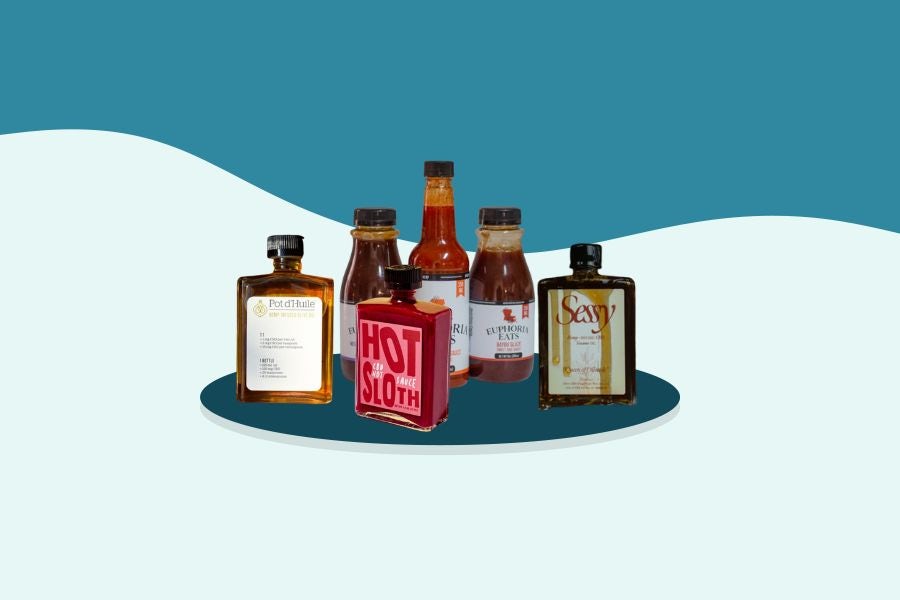



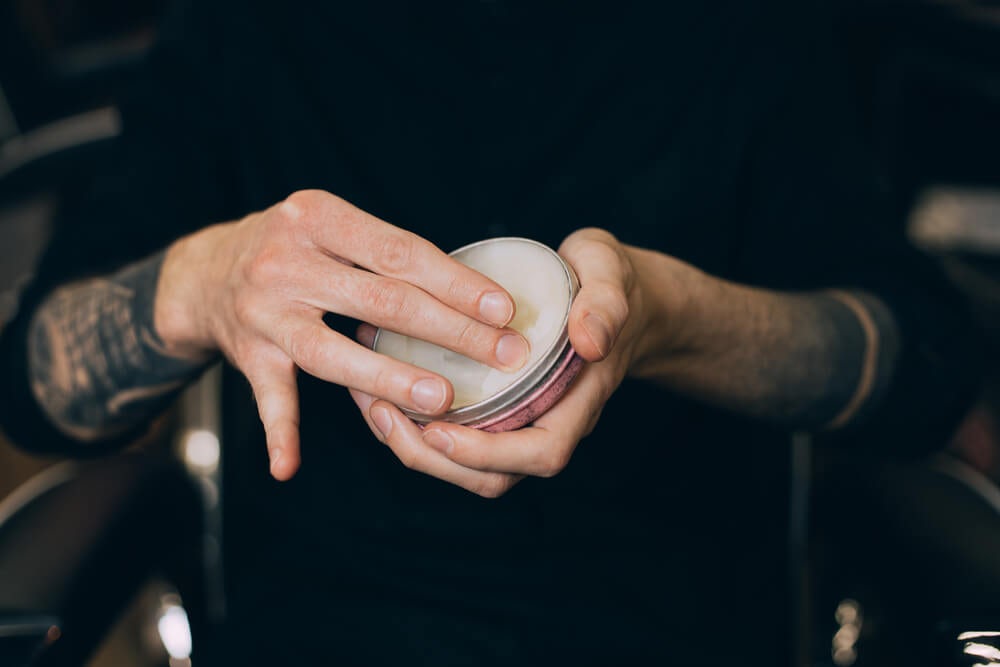
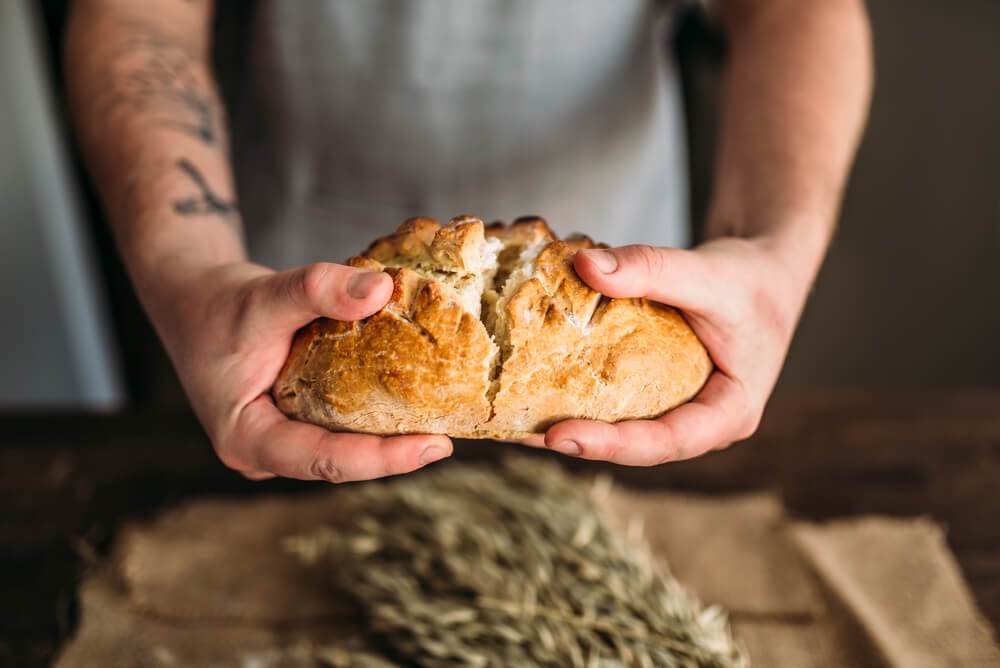













I am curious about how to infuse the oils without decarboxylating. Can you please explain this process? Thank you in advance.